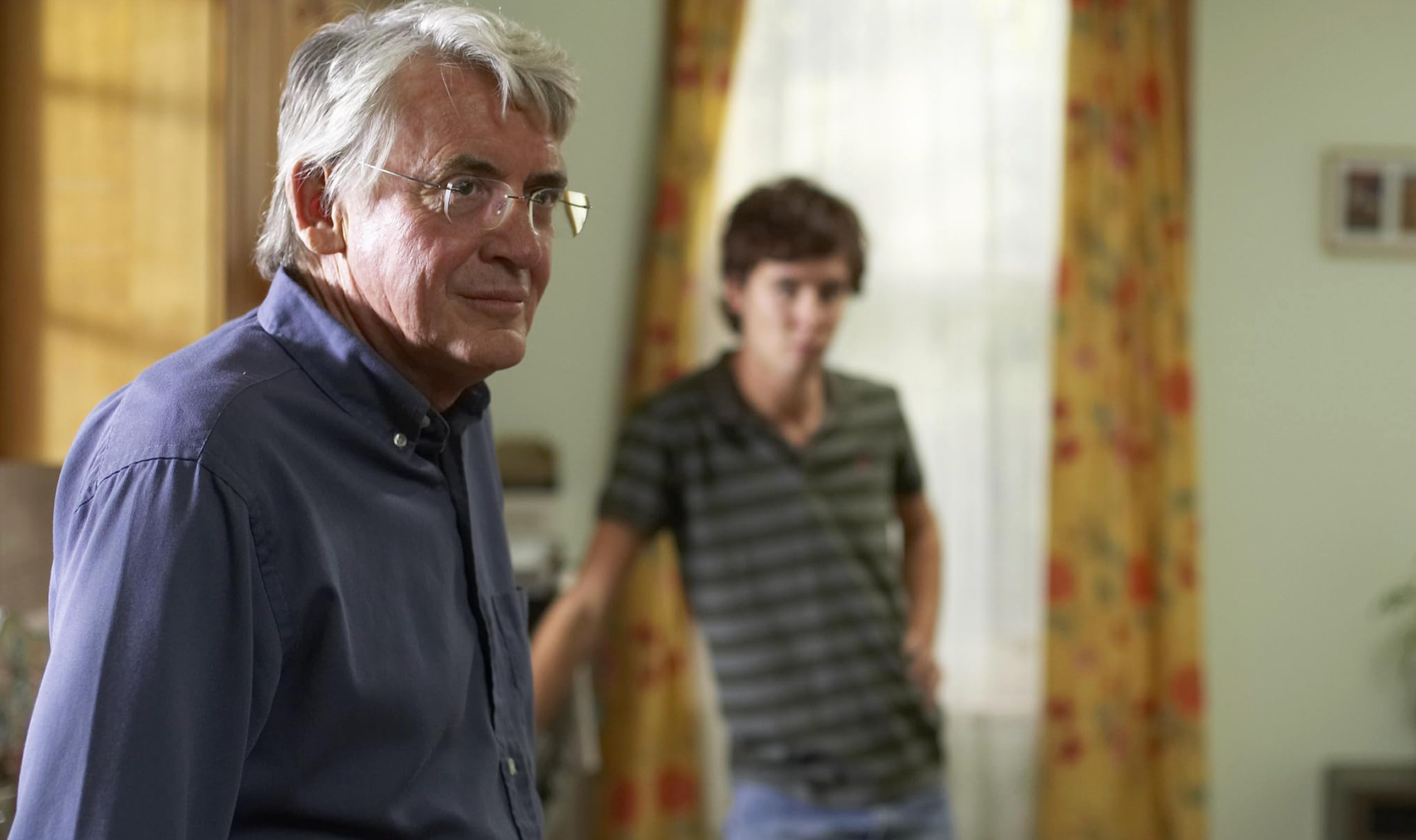I love a good found footage or faux-documentary horror film, which come with the inherent conceit of "reality" based on the idea that the footage was captured in the midst of terrifying events. My first experience with the sub-genre was The Blair Witch Project, a movie that thoroughly creeped me out (especially since I was living in the woods at the time). The shaky camera work reflected the story, helping to immerse me in the terror of being lost and stalked in the wood — and yet, I was never "tricked" by the experience. I always knew it was fictional.
And this remained true for all the found footage horror films I loved over the years (Paranormal Activity, REC, and The Last Exorcism being among my favorites). I never fell for the conceit to the extent that I forgot it was fake. Many begin with a general sense of verisimilitude and then build the horror through spectacle or effects to such an extent that the presumed "reality" fades as the narrative progresses. Not once have I ever found myself asking whether what I was watching was real—until Lake Mungo, an obscure supernatural thriller (released in 2008) that has grown a cult following.
When I turned on Lake Mungo, the movie when completely against my expectations based on both my previous experiences with found footage and the overly dramatic movie poster, which implies more overt scares. Instead, I got something more subtle, so much so that I actually stopped the film thirty minutes in to double check whether it was fiction or a real documentary.
Lake Mungo isn't scary in the traditional sense, but it is deeply unsettling and haunting—and ultimately heartbreaking.

Grief is a Haunting
Lake Mungo opens with the voice of Alice Palmer (played by Talia Zucker), a young woman who tragically passed in a drowning accident in December 2005. "I feel like something bad is going to happen to me," she says. "I feel like something bad has happened. It hasn't reached me yet, but it's on its way."
We don't yet know the context of these words, but as they are spoken over Victorian-era photographs of people with shadows and wisps of ghosts in the background. However, this eerie message from Alice is countered by the voice of Jason Whittle (Marcus Costello), one of Alice's friends, who questions why people make up stories about ghosts as a way to deal with loss.
Much of the Lake Mungo balances on this question of whether hauntings—and specifically, the haunting of the Palmer family—are real. Though fictional, the movie presents itself as a grounded, unbiased documentary, balancing the perspectives of believers with those who are more skeptical.
The core of the story is the Palmer family and their grief following the tragic drowning of Alice in Lake Mungo. Shortly after the funeral, the family begins to experience strange happenings in their home, knocks and noises, and eventually the presence of a shadowy figure caught on camera. Meanwhile, visitors to the lake discover the figure of a young woman in the back ground of their grainy videos, building on the mystery of whether Alice continues to linger after her passing.
In a true documentary style, Lake Mungo's story is primarily told through "talking head" interviews with the Palmer family, along with friends and members of the local community. The interviews are somewhat dry, reflecting the experience of trying to describe events and the people involved after they have already taken place. This creates a kind of emotional distance, as the family holds back the full depth of their feelings for the sake of trying to tell their story to the camera.

The quiet performances help to make Lake Mungo feel closer to reality, because there is little to no melodrama. According to an oral history interview with the cast and creators published on Split Tooth Media, much of the film was improvised. "What we got was a description of the scene that you were being asked to play," said David Pledger (who played the father, Russell Palmer). "I might call it more like a structured improvisation, because the script really had a fair amount of structure to it, so you could kind of plot an arc throughout the script as to what you might offer up as an actor."
Intercut with the interviews is home video footage — videos of Alice when she's alive, videos inside the home capturing apparitions after her death, videos from strangers who accidentally capture the image of a young woman in the woods who just might be Alice. All of this footage is grainy and off-putting, catching the shadow of something that might be supernatural or might just as easily explained as a camera trick.
One of the things that really fascinated me about Lake Mungo was how it used the documentary structure of interviews and home videos to provide narrative twists and surprises. The movie presents itself as a kind of mystery, unveiling information strategically. As the audience, we learn first about Alice's death, then the possible haunting with video evidence of a shadowy figure moving through the home. Based on this information, we are geared up to believe this family is haunted — then bam, new information is revealed that recontextualizes everything.
At one point psychic is called in to support the family. Normally, this would be the point in the ghost story where the who, what, and why are revealed. The psychic, after all, is the one who usually has the answers, or at least the means to find them. But in Lake Mungo, the psychic provides no more certainty than anything else.

Lake Mungo twists and turns back on its own narrative several times, presenting evidence of the supernatural, only to shift the narrative into doubt—and then shifting it again into a new unsettling direction. When new video footage and evidence is discovered over the course of the faux-documentary, uncovering disturbing truths about Alice, her secret life, and her death, it never provides complete answers, only new uncertainties.
In a way, the movie evokes the feeling of watching paranormal documentaries, ghost hunting shows, and "real" ghost video clips on the internet. Are we seeing an actual ghost? Is this just a camera glitch? Is it a hoax?
Even in the fictional realm of Lake Mungo, the answer isn't fully clear. Part of how the viewer will respond to these kinds of questions while watching depends on their personal beliefs regarding the matter. Believers in the supernatural lean toward accepting the potential reality of a ghost. Non-believers tend to presume otherwise. Each tends to be certain their own point of view is the correct one. But having the answer isn't always the point.
Moving On
All of the apparitions of Alice are presented through the lens of home movies, moments in time captured in grainy footage. Ghosts, like home videos, are a way of staying connected to the past. Pledger describes how his character Russell (the father) confuses the memory of seeing his daughter as a ghost with the memory of a home video footage. He asks, "That memory through the prism of grief — does that conjure something? Does that project something? And if it’s only the family that is seeing and experiencing that, does that make it any less authentic or real?"
By the end of the movie, the need to find the answers dissolves. The Palmer family makes peace with their grief and chooses to move on with their lives. The mysteries around Alice's last days are not so much resolved as the family elects to close the book—and that feels so natural to the way we handle grief. The people we've lost remain gone, and we just have to keep going.



